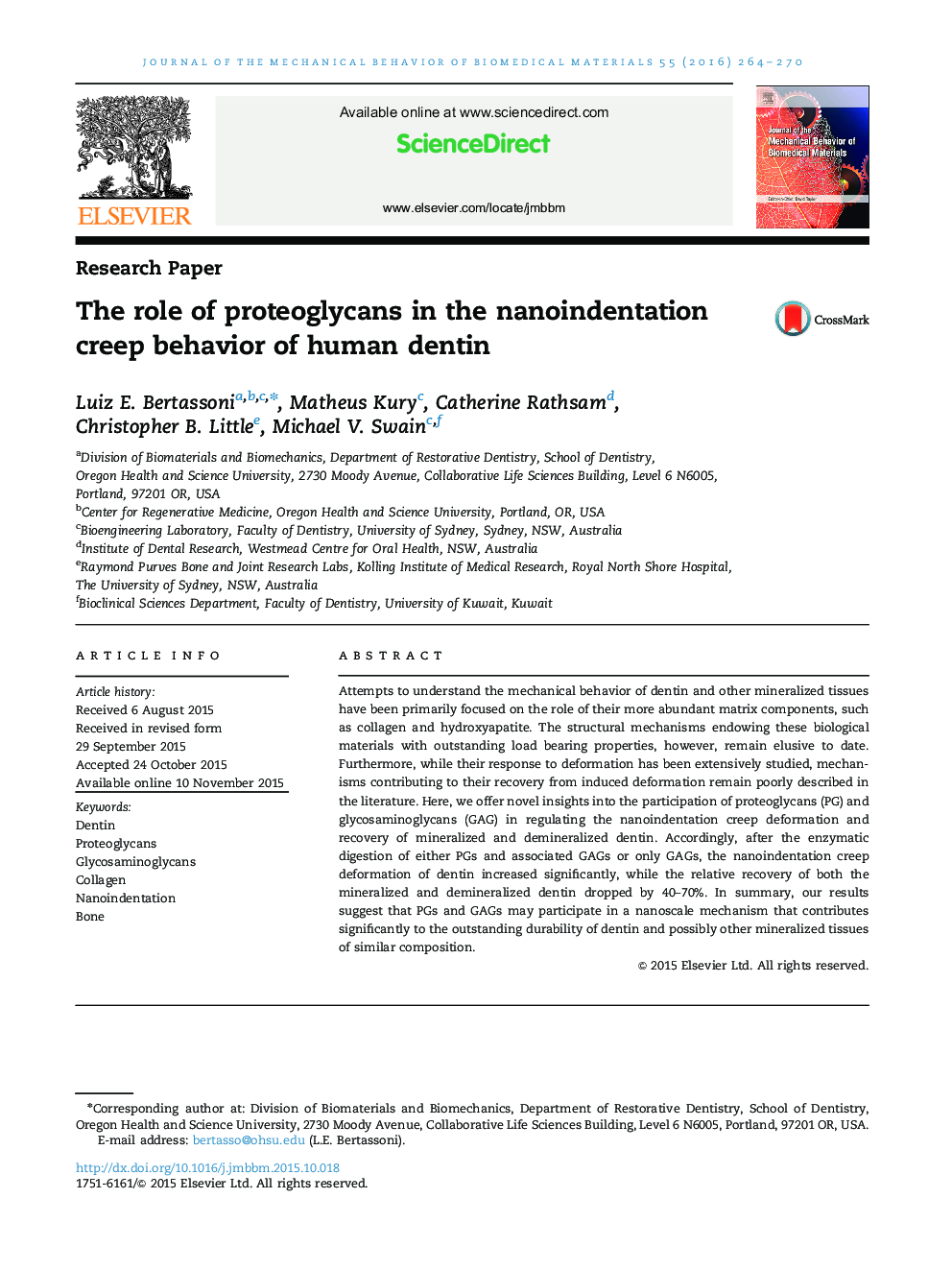| Article ID | Journal | Published Year | Pages | File Type |
|---|---|---|---|---|
| 810512 | Journal of the Mechanical Behavior of Biomedical Materials | 2016 | 7 Pages |
Attempts to understand the mechanical behavior of dentin and other mineralized tissues have been primarily focused on the role of their more abundant matrix components, such as collagen and hydroxyapatite. The structural mechanisms endowing these biological materials with outstanding load bearing properties, however, remain elusive to date. Furthermore, while their response to deformation has been extensively studied, mechanisms contributing to their recovery from induced deformation remain poorly described in the literature. Here, we offer novel insights into the participation of proteoglycans (PG) and glycosaminoglycans (GAG) in regulating the nanoindentation creep deformation and recovery of mineralized and demineralized dentin. Accordingly, after the enzymatic digestion of either PGs and associated GAGs or only GAGs, the nanoindentation creep deformation of dentin increased significantly, while the relative recovery of both the mineralized and demineralized dentin dropped by 40–70%. In summary, our results suggest that PGs and GAGs may participate in a nanoscale mechanism that contributes significantly to the outstanding durability of dentin and possibly other mineralized tissues of similar composition.
